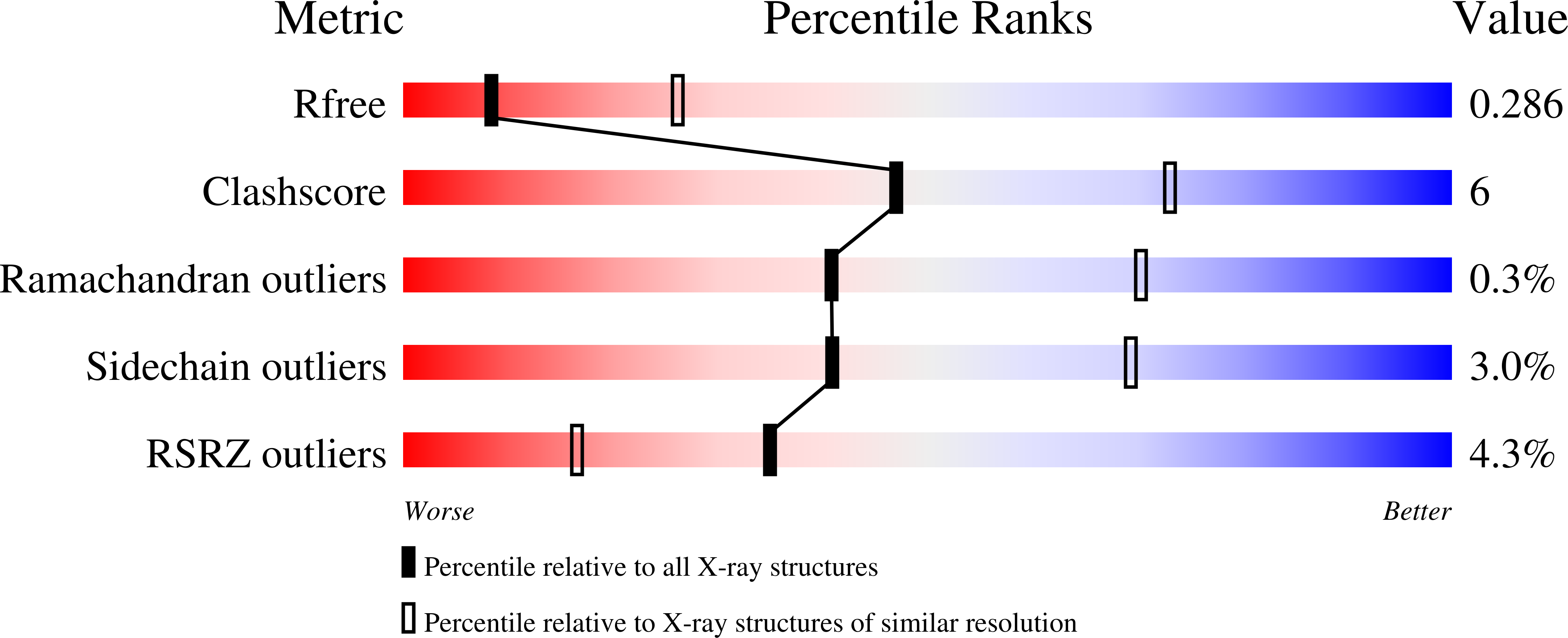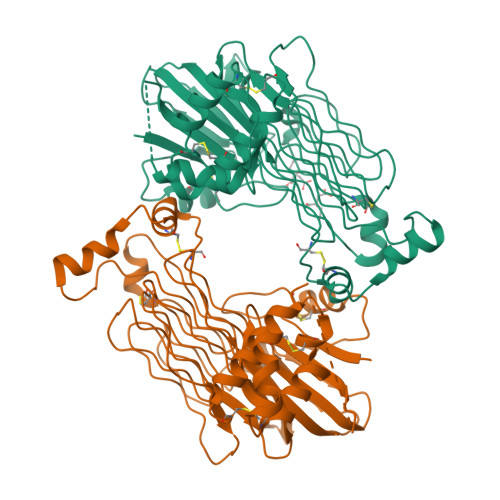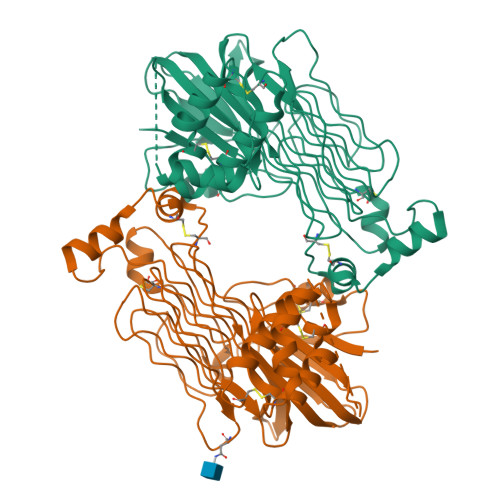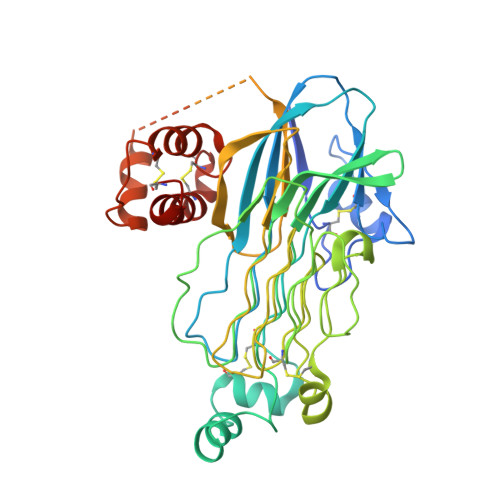Structural basis for ligand reception by anaplastic lymphoma kinase.
Li, T., Stayrook, S.E., Tsutsui, Y., Zhang, J., Wang, Y., Li, H., Proffitt, A., Krimmer, S.G., Ahmed, M., Belliveau, O., Walker, I.X., Mudumbi, K.C., Suzuki, Y., Lax, I., Alvarado, D., Lemmon, M.A., Schlessinger, J., Klein, D.E.(2021) Nature 600: 148-152
- PubMed: 34819665
- DOI: https://doi.org/10.1038/s41586-021-04141-7
- Primary Citation of Related Structures:
7LIR, 7LRZ, 7LS0, 7MK7 - PubMed Abstract:
The proto-oncogene ALK encodes anaplastic lymphoma kinase, a receptor tyrosine kinase that is expressed primarily in the developing nervous system. After development, ALK activity is associated with learning and memory 1 and controls energy expenditure, and inhibition of ALK can prevent diet-induced obesity 2 . Aberrant ALK signalling causes numerous cancers 3 . In particular, full-length ALK is an important driver in paediatric neuroblastoma 4,5 , in which it is either mutated 6 or activated by ligand 7 . Here we report crystal structures of the extracellular glycine-rich domain (GRD) of ALK, which regulates receptor activity by binding to activating peptides 8,9 . Fusing the ALK GRD to its ligand enabled us to capture a dimeric receptor complex that reveals how ALK responds to its regulatory ligands. We show that repetitive glycines in the GRD form rigid helices that separate the major ligand-binding site from a distal polyglycine extension loop (PXL) that mediates ALK dimerization. The PXL of one receptor acts as a sensor for the complex by interacting with a ligand-bound second receptor. ALK activation can be abolished through PXL mutation or with PXL-targeting antibodies. Together, these results explain how ALK uses its atypical architecture for its regulation, and suggest new therapeutic opportunities for ALK-expressing cancers such as paediatric neuroblastoma.
Organizational Affiliation:
Department of Pharmacology, Yale University School of Medicine, New Haven, CT, USA.



















